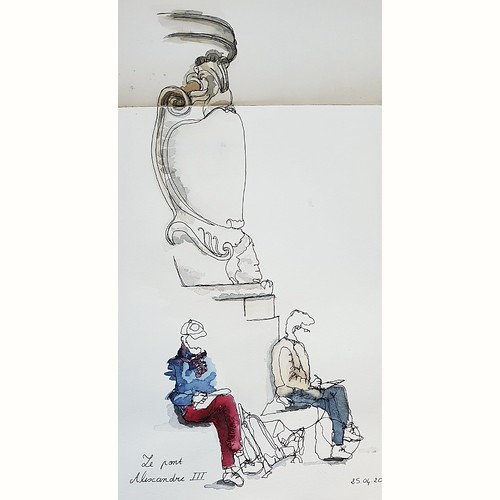SupplementsSresorption. Proof from animal models of idiopathic OA suggests that bone changes may perhaps precede cartilage deterioration, which would indicate that they are part of the major illness course of action. Patients with OA modifications evident on hip radiographs were located to have a greater than typical bone mineral density not only in the hip, but in addition 4-IBP chemical information within the distal radius, vertebrae and calcaneus. These gross adjustments inside the bone are reflected inside the composition, structure and organisation with the trabecular bone and within the subchondral bone plate. There’s huge proliferation of cancellous bone, by up to by volume, throughout the femoral head and neck. Corresponding to this, histomorphometry has shown an increase in trabecular thickness, having a concomitant reduction in trabecular quantity, and a rise in osteoid width and eroded surfaces. A reduction in mineralisation is identified in subchondral trabecular bone, perhaps reflecting a a lot more rapidly formed woven bonelike tissue observed employing scanning electron microscopy. This can be reflected within a reduced material density. Scanning electron microscopy also showed situations of abnormal bone formation inside the trabecular spaces and a significantly higher quantity of Howship’s CF-102 lacunae indicating enhanced PubMed ID:https://www.ncbi.nlm.nih.gov/pubmed/27811 osteoclastic activity. A thickening from the subchondral bone plate has been reported in humans and cynomolgus macaques with OA, which also suggests an imbalance amongst bone formation and resorption. Changes aren’t restricted towards the impacted joint. The iliac crest in ladies with hand OA has been discovered to possess far more bone, but using a mineralization profile shifting to greater densities, suggesting lowered bone turnover. The proliferation of subchondral bone benefits in an increase in apparent, or tissue, modulus. Despite the fact that the apparent modulus increases, the reduction in mineral content results in a reduction in the modulus on the bone matrix itself. Indentation research showed a reduced hardness, and by  implica
implica
tion modulus, in the subchondral bone matrix. Utilizing thermal evaluation and Xray diffraction, we identified no differences in crystallite size, unit cell dimensions or decomposition properties indicating, however, that the nature with the mineral itself, a carbonated apatite, was not altered. Studies have implicated the receptor activator of NFBreceptor activator of NFB ligandosteoprotegerin regulatory pathway by showing elevated levels of mRNA for receptor activator of NFB along with a lower in the ratio of receptor activator of NFB ligand to osteoprotegerin. This ratio then failed to correlate with bone remodelling indices, unlike inside the normal controls, suggesting a disruption on the regulation of bone remodelling. Moreover, it has been recommended that the coregulation in the mechanical properties of bone and cartilage doesn’t function as typical. We’ve got also shown that the femoral head includes twice the amount of fat per unit volume of cancellous bone tissue (like bone marrow) as osteoporotic bone and has elevated levels of (n) fatty acids, particularly arachidonic acid. Considerable adjustments in bone composition, architecture, good quality and regulation are hallmarks of OA. It’s nevertheless not clear irrespective of whether these modifications comply with, precede or accompany the broadly studied changes in articular cartilage. Subchondral bone does not seem to play a biomechanical role within the initiation on the disease. The widespread changes in bone, the frequent presence of several joint involvement and the link with obesity has lead to the suggestion of a s.SupplementsSresorption. Evidence from animal models of idiopathic OA suggests that bone alterations may perhaps precede cartilage deterioration, which would indicate that they are part of the key illness procedure. Patients with OA changes evident on hip radiographs have been discovered to possess a greater than typical bone mineral density not only inside the hip, but additionally in the distal radius, vertebrae and calcaneus. These gross alterations in the bone are reflected within the composition, structure and organisation of the trabecular bone and in the subchondral bone plate. There is certainly enormous proliferation of cancellous bone, by up to by volume, all through the femoral head and neck. Corresponding to this, histomorphometry has shown a rise in trabecular thickness, having a concomitant reduction in trabecular quantity, and an increase in osteoid width and eroded surfaces. A reduction in mineralisation is located in subchondral trabecular bone, perhaps reflecting a a lot more rapidly formed woven bonelike tissue seen applying scanning electron microscopy. This really is reflected in a reduced material density. Scanning electron microscopy also showed instances of abnormal bone formation within the trabecular spaces and also a considerably higher number of Howship’s lacunae indicating enhanced PubMed ID:https://www.ncbi.nlm.nih.gov/pubmed/27811 osteoclastic activity. A thickening from the subchondral bone plate has been reported in humans and cynomolgus macaques with OA, which also suggests an imbalance amongst bone formation and resorption. Adjustments are certainly not limited for the affected joint. The iliac crest in girls with hand OA has been discovered to possess extra bone, but with a mineralization profile shifting to larger densities, suggesting decreased bone turnover. The proliferation of subchondral bone outcomes in an increase in apparent, or tissue, modulus. Even though the apparent modulus increases, the reduction in mineral content results in a reduction in the modulus with the bone matrix itself. Indentation studies showed a lowered hardness, and by implica
tion modulus, in the subchondral bone matrix. Making use of thermal analysis and Xray diffraction, we discovered no variations in crystallite size, unit cell dimensions or decomposition  properties indicating, nevertheless, that the nature of your mineral itself, a carbonated apatite, was not altered. Research have implicated the receptor activator of NFBreceptor activator of NFB ligandosteoprotegerin regulatory pathway by showing elevated levels of mRNA for receptor activator of NFB and also a reduce in the ratio of receptor activator of NFB ligand to osteoprotegerin. This ratio then failed to correlate with bone remodelling indices, in contrast to inside the regular controls, suggesting a disruption in the regulation of bone remodelling. In addition, it has been recommended that the coregulation in the mechanical properties of bone and cartilage will not function as normal. We’ve also shown that the femoral head contains twice the quantity of fat per unit volume of cancellous bone tissue (including bone marrow) as osteoporotic bone and has elevated levels of (n) fatty acids, especially arachidonic acid. Considerable adjustments in bone composition, architecture, top quality and regulation are hallmarks of OA. It really is still not clear no matter whether these adjustments follow, precede or accompany the extensively studied alterations in articular cartilage. Subchondral bone does not seem to play a biomechanical role in the initiation on the illness. The widespread alterations in bone, the frequent presence of multiple joint involvement and also the link with obesity has cause the suggestion of a s.
properties indicating, nevertheless, that the nature of your mineral itself, a carbonated apatite, was not altered. Research have implicated the receptor activator of NFBreceptor activator of NFB ligandosteoprotegerin regulatory pathway by showing elevated levels of mRNA for receptor activator of NFB and also a reduce in the ratio of receptor activator of NFB ligand to osteoprotegerin. This ratio then failed to correlate with bone remodelling indices, in contrast to inside the regular controls, suggesting a disruption in the regulation of bone remodelling. In addition, it has been recommended that the coregulation in the mechanical properties of bone and cartilage will not function as normal. We’ve also shown that the femoral head contains twice the quantity of fat per unit volume of cancellous bone tissue (including bone marrow) as osteoporotic bone and has elevated levels of (n) fatty acids, especially arachidonic acid. Considerable adjustments in bone composition, architecture, top quality and regulation are hallmarks of OA. It really is still not clear no matter whether these adjustments follow, precede or accompany the extensively studied alterations in articular cartilage. Subchondral bone does not seem to play a biomechanical role in the initiation on the illness. The widespread alterations in bone, the frequent presence of multiple joint involvement and also the link with obesity has cause the suggestion of a s.